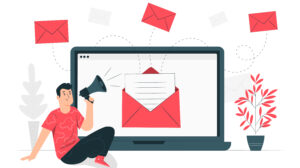Ask nearly any American over the age of 30 “who is the King of Beers” and you’re almost guaranteed the correct answer – Budweiser.
The beer conglomerate, more accurately known as Anheuser-Busch, is the largest brewer in the United States, with a 2016 market share of 45% and a global market share of 28%. That’s pretty impressive no matter how you pour it, considering the vast range of beers that can be found the world over.
It appears, then, that the term is a fitting one since Anheuser-Busch owns eight of the larger breweries in the country – brands such as Michelob, Rolling Rock, Busch, and Natural – as well as a variety of craft breweries.
However, Budweiser’s title is also the hard-earned result of a long-term marketing campaign; nobody refers to Bud as the King of Beers because they have an innate knowledge about its market share. Rather, the tag line has been drilled into our heads via countless TV, radio, and now internet spots, practically since the inception of the technology.
It’s a tagline Adolphus Busch is said to have come up with in the late 1800’s – transposing a Czech competitor’s slogan, “The Beer of Kings” into his own, “The King of Beers.” Arguably, it worked. Despite the fact that craft beer is overtaking a portion of the market formerly occupied by domestic beer – a trend Anheuser-Busch is attempting to get in on with its continuing purchases of popular craft breweries – the company still leads the U.S. market.
What Does This Have to Do With Me?
You may remember some of Budweiser’s more popular TV ad campaigns – who could forget the three frogs, croaking along until they had even schoolchildren giggling and repeating “Bud,” “Weis,” and “Errrrr?” Maybe you’re more of a “Wazzuuuuuup” nostalgist. Or possibly, you’re more apt to recall the Clydesdale ads that really tugged at the heartstrings.
The fact is, Budweiser hasn’t stopped churning out culturally relevant, sometimes poignant, TV ads – particularly on Super Bowl Sunday – for years. In the age of digital media, coupled with the rise of the craft brewery, however, the company has come to realize that a strategy other than TV is necessary.
Budweiser’s attempts to stay relevant in an increasingly mom-and-pop, craft, hipster (we could go on) industry are valiant. It’s been doing a much better job of using social media in the past few years, beginning with the 2016-17 NFL season.
The Power of Inspiring Followers to Interact
Part of Budweiser’s strategy that year was to scatter gold cans among its commonly sized packages of Bud Light (the NFL’s official beer). Upon finding one, customers were encouraged to post it on Facebook, Twitter, or Instagram, complete with corresponding hashtags. At the end of the season, Budweiser performed a drawing with the winner receiving free Super Bowl tickets for life.
The campaign was repeated in 2018, though there’s no sign of it in 2019 thus far. However, the key is that Budweiser was making an attempt to stay with the times, a strategy it expanded on in the next MLB season.
In 2017, Budweiser printed custom cans for fourteen MLB teams in its largest markets. The company had produced team cans before, but this time, one thing was different – the company actively encouraged artists for each of the cans to share the design on social media.
Next came the fans – on opening day, fans were encouraged to share their team’s can with the hashtag #thisbudsforyou.
Effectively, Budweiser took the advice its marketing team was undoubtedly giving, and realized that it wasn’t enough to build a social media profile if the target market – the millennials the company was losing to craft breweries – wasn’t engaging with it.
By encouraging social media sharing of its brand, Budweiser was asking its customers to do some of its legwork – get the Budweiser name circulating on social media and prove that millennials still enjoy its product.
Since then, campaigns have ranged from raising scholarship money for military families and surprising them with it, all using the #thisbudsforyou hashtag – to Super Bowl 50’s #giveadamn campaign encouraging consumers to find alternatives to drunk driving. The #giveadamn campaign, in particular, used influencers, encouraging customers to plan a way home from their Super Bowl parties.
Overall, the hashtag garnered 181 million Twitter impressions, as well as 6,000 views of its custom spot on the topic – and a lot of social media goodwill. Budweiser is learning.
Viral and In-the-Moment Opportunities
Budweiser is still learning to engage users on social media, but it’s proven excellent at one aspect companies with social media can learn to use better – seizing in-the-moment opportunities.
A fan at a San Diego Padres baseball game last year inadvertently caught a baseball in her beer cup. Featured on camera, the woman was unsure what to do – until she decided to chug the rest of her beer with the ball still in the cup. Budweiser took the moment and ran with it, tweeting a video of the interaction and offering game tickets – and a beer – to the woman.
“If you catch a ball in your beer you have to finish it. She knows the rules.” Budweiser took advantage of some free advertising and used it on a platform known for keeping current, resulting in thousands of likes.
Similarly, other brands have capitalized on viral moments. Remember the brief IHOP/IHOB name change campaign in 2018? Actual burger chains such as Wendy’s, White Castle, and Burger King mocked the viral switch and used it to promote their own brands, riding the coattails of the original hashtags to profits.
Twitter is known for keeping tabs on what’s trending, and these companies have been proactive enough to seize on viral moments and use organic videos – and user’s reactions to them – to drive their own reach.
What Can You Take From All This?
What can your business learn about Budweiser’s changing social media strategies? In our earlier post about Twitter, we mentioned several strategies for promoting your brand. One of the most important was to “Be Unique.” That’s a message we think you can take from Budweiser’s recent strategies as well.
In their content, Budweiser not only targeted a market it felt it was missing out on, millennials, but it used its unique, well-known “King of Beers” and “This Bud’s On Us” taglines to do it. Also, it targeted the NFL and MLB’s large customer bases with a strategy to use team and regional pride to get them sharing Budweiser’s content.
What are some ways your business can capitalize on current events, local happenings, or pop culture trends to drive views of your social media content? Alternatively, how could you encourage your existing Twitter followers to share mentions of your business or unique hashtags? Perhaps your next product release could be accompanied with a campaign asking followers to interact with your page to receive some incentive.
Whichever approach you take, remember that Twitter – and social media in general – requires a great deal of content. Keeping your Twitter account up-to-date gives the impression that your business is booming and staying current with today’s market. Post useful, unique content and promotions that encourage users to interact with your page and with each other.
Most importantly, keep people talking. It’s one reason Budweiser is still relevant after over 140 years and a key factor in whether they’ll stay that way in the years to come.




